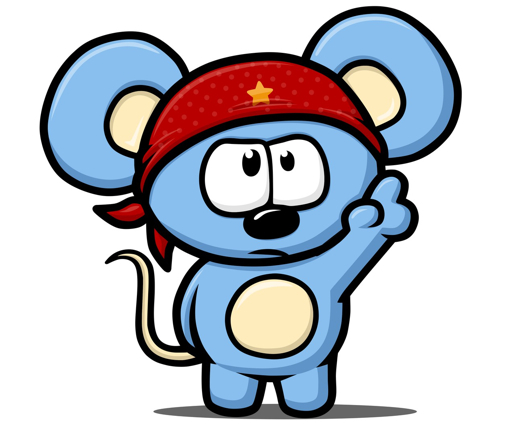Remember that classic Super Bowl ad showing cowboys herding cats? Well, the challenge may feel much the same for social media users, even adept ones like journalists and journalism educators who revel in the technology’s transformative power but who can find themselves drowning in the torrent that pours non-stop from social platforms like Twitter, Facebook and dozens of smaller ones.
So when social media experts gather, as 500 or so did at Social Media Weekend, hosted by Columbia University’s Graduate School of Journalism in New York last weekend, they naturally spend lots of time griping about the overload, then frenetically sharing notes about the technologies and techniques that’ll keep them afloat as they brave the social media flood.
Below are some of the new tools and best practices that emerged at the confab. And if you know of others, please take a moment to share them in the comments section below.
Staggering volumes of content
But first some stats to put things in perspective. Twitter’s Mark Luckie, manager of journalism and news, told the weekend crowd Twitter has 200 million active users a month tweeting more than 400 million times a day. That’s 1 billion tweets every two-and-a-half days.
Similarly, Facebook’s Journalism Program manager, Vadim Lavrusik, says the site’s 1 billion monthly active users each share about 150 items every month. (Do the math!) That number has been doubling each year for the last four.
And we’re hardly even getting started. Some 72 hours of video are uploaded to YouTube every minute; 40 million photos are posted on Instagram every day; and professionals join at a rate of two members per second on LinkedIn, sharing info in more than 1.5 million groups.
Tools to ‘cut through the noise’
How do you manage the onslaught of social media content? There have long been plenty of tools to help with simple aggregation, like Google Reader for RSS feeds or Hootsuite or Tweetdeck to manage Twitter and social media streams.
Now new tools are emerging that aim more at helping you curate all those aggregated sources. (Think of the distinction this way: Aggregation is like separating an unruly river of info into more manageable streams, while curation is like snagging the prize fish as it swims in the stream so you can share it with everyone else over dinner.)
Here are a few of the tools spotlighted at the conference:
- Social web hubs: RebelMouse, for instance, collects your social stream into a website that displays what you share dynamically. Sam Epstein, vice president of the platform, told the gathering the tool has been used widely, such as by ESPN for Super Bowl reactions and Time.com for reactions to its person of the year selection. And journalism educators like Kelly Fincham of Hofstra have had students use it to display social media reporting on Hurricane Sandy. Even conference organizers used it during the weekend to display social media from the #SMWKND hashtag. Similarly, Overblog, a Euro blogging platform, has been redesigned to highlight your curated social content and that of your trusted sources, said CEO Frederic Montagnon. Scoop.it is another social web hub tool mentioned at the conference.
- Discovery engines: Some of the new tools go further to help the curation process along, using machine intelligence. In that vein, one conference panelist pointed to GetPrismatic, which uses algorithms to figure out what is most relevant to you from your social media stream. Another smart filtering curation tool is Spundge which has seen pickup from journalists like Steve Outing, who created a Spundge “notebook” on digital storytelling tools and techniques. Spundge, like the popular Storify curation tool, also allows curated material to be organized in chronological, annotated storytelling narratives. One participant at the conference put together this Storify of the gathering’s highlights.
- Social visualizers: Although it would be nice to see the social media stream with Matrix-like detail, some new tools can provide a unique and helpful way of visualizing Twitter content. One spolighted by conference organizers was Sees.aw,
 One of the Tweets with the hashtag #SMWKND visualized by VisibleTweets
One of the Tweets with the hashtag #SMWKND visualized by VisibleTweetswhich allows you to organize, display and save streams by hashtag, topic or keyword — see examples from super users dcabfab and medialabrat. Another intriquing visualization tool can be found at VisibleTweets, which allows you to animate tweets for public display.
- Social relationship managers: Curation isn’t solely about content, but also about managing relationships with the people you encounter on social platforms. One such product highlighted at the gathering was oneQube, which founder Robert Moore said was designed to increase efficiency in building relationships in the social space by using search filters to find individuals in your network and drill down into their profiles to learn more about them. Still in private beta is another relationship mining tool, Archive.ly, which was described by founder and CEO Perri Gorman as a “people research platform.”
Techniques, tried and true
Curation is not just about new tools. Even using standard Twitter search and Twitter lists can help identify material worthy of sharing. And curation goes well beyond the technology. Social media experts at the meeting repeatedly emphasized the human element.
“Curate those things you really care about, that are authentically you,” advised Archively’s Gorman. Amy Vernon, a long-time journalist who now helps run NYC tech startup Internet Media Labs, emphasized the connection between curation and your existing social media relationships, suggesting that the best way to build more relationships is to curate material from those you’re already engaged with. Agreeing was Overblog’s Montagnon, who made a case for the very best tool for curation — “your brain.”
For more news from the Social Media Weekend conference, explore the hashtag #SMWKND and visit the conference Facebook group.
A. Adam Glenn is associate professor at the CUNY Graduate School of Journalism, and a longtime digital journalist and media consultant. Connect with him on Facebook or LinkedIn, and follow his Twitter feed.


